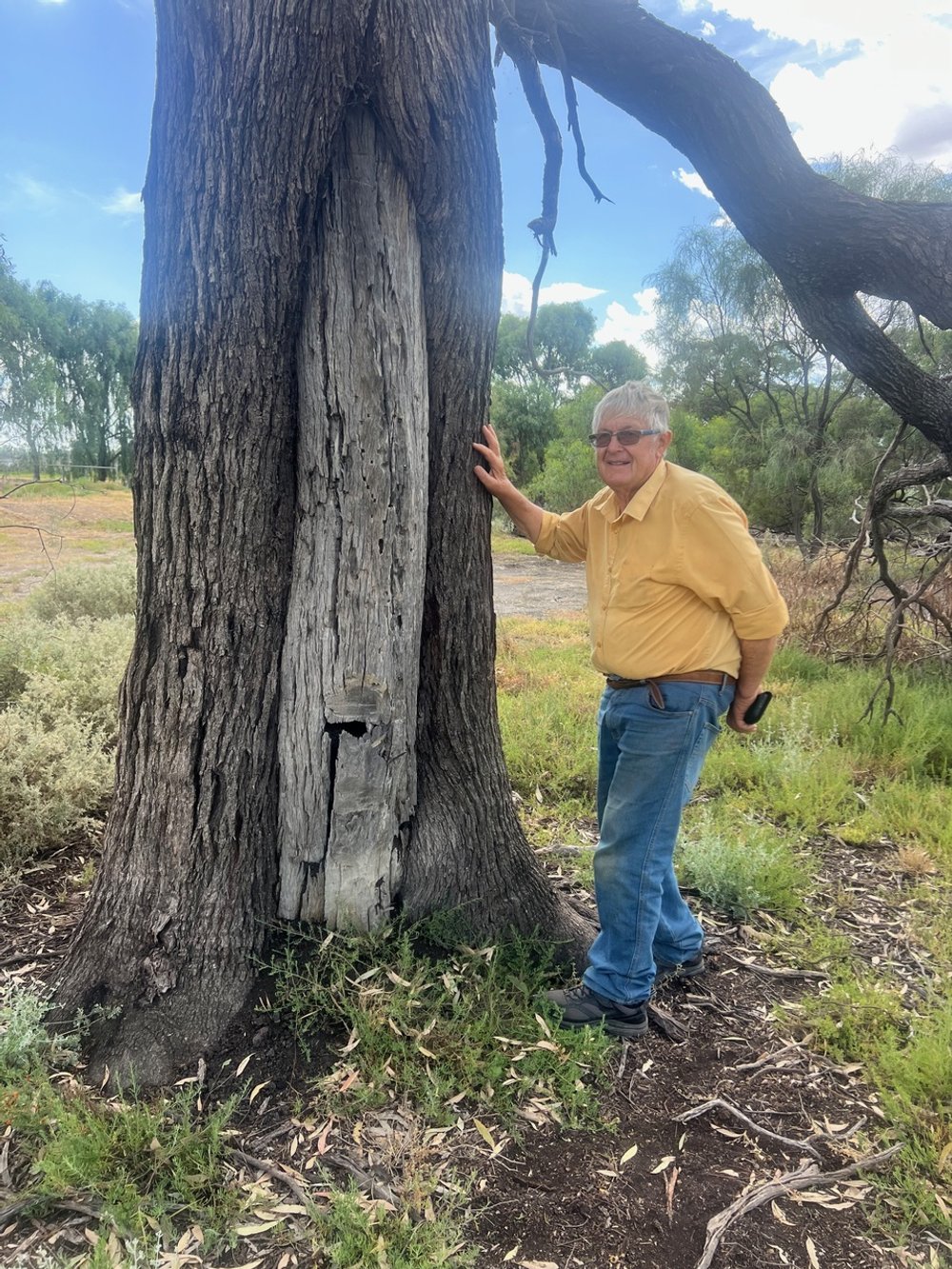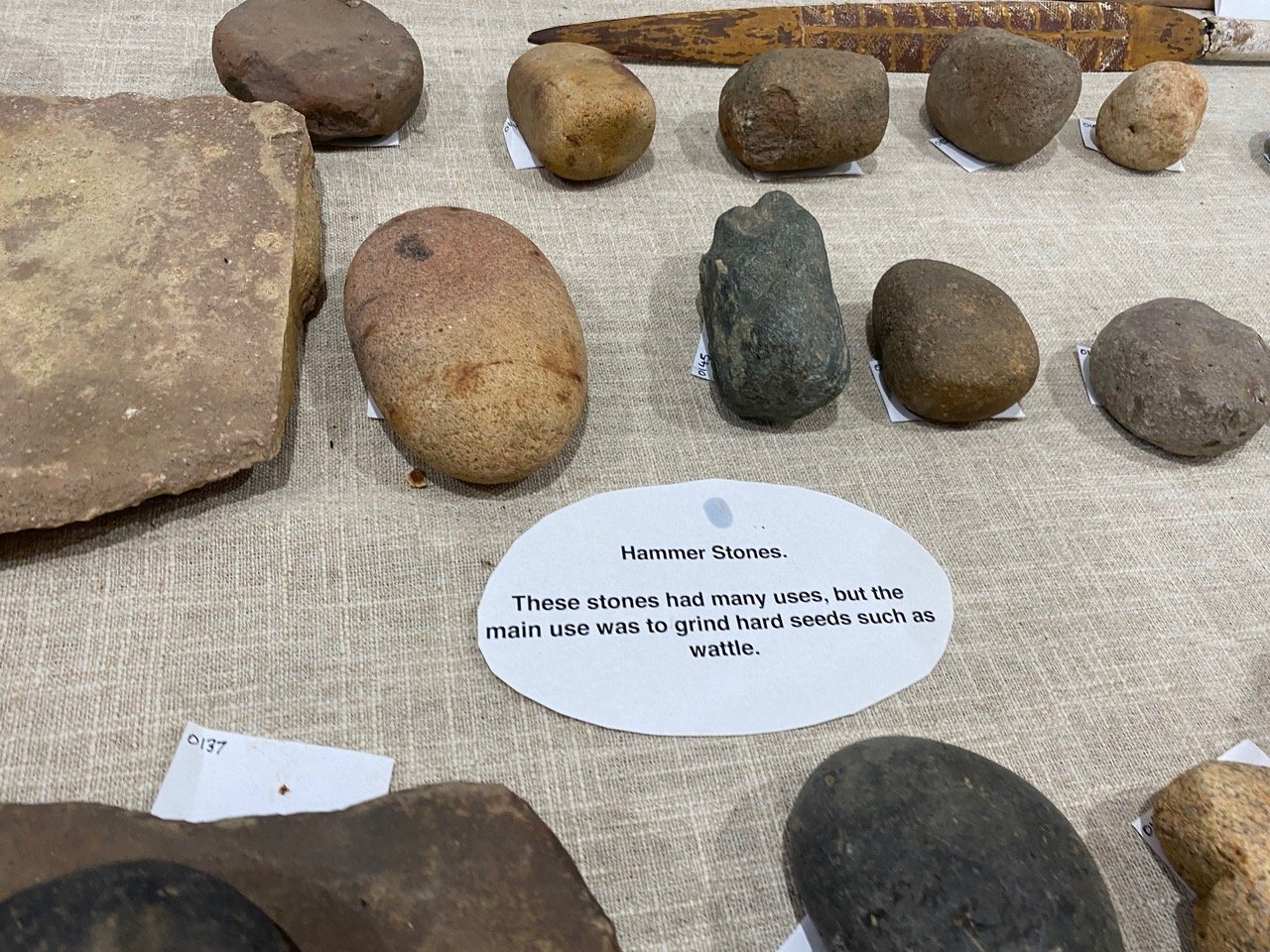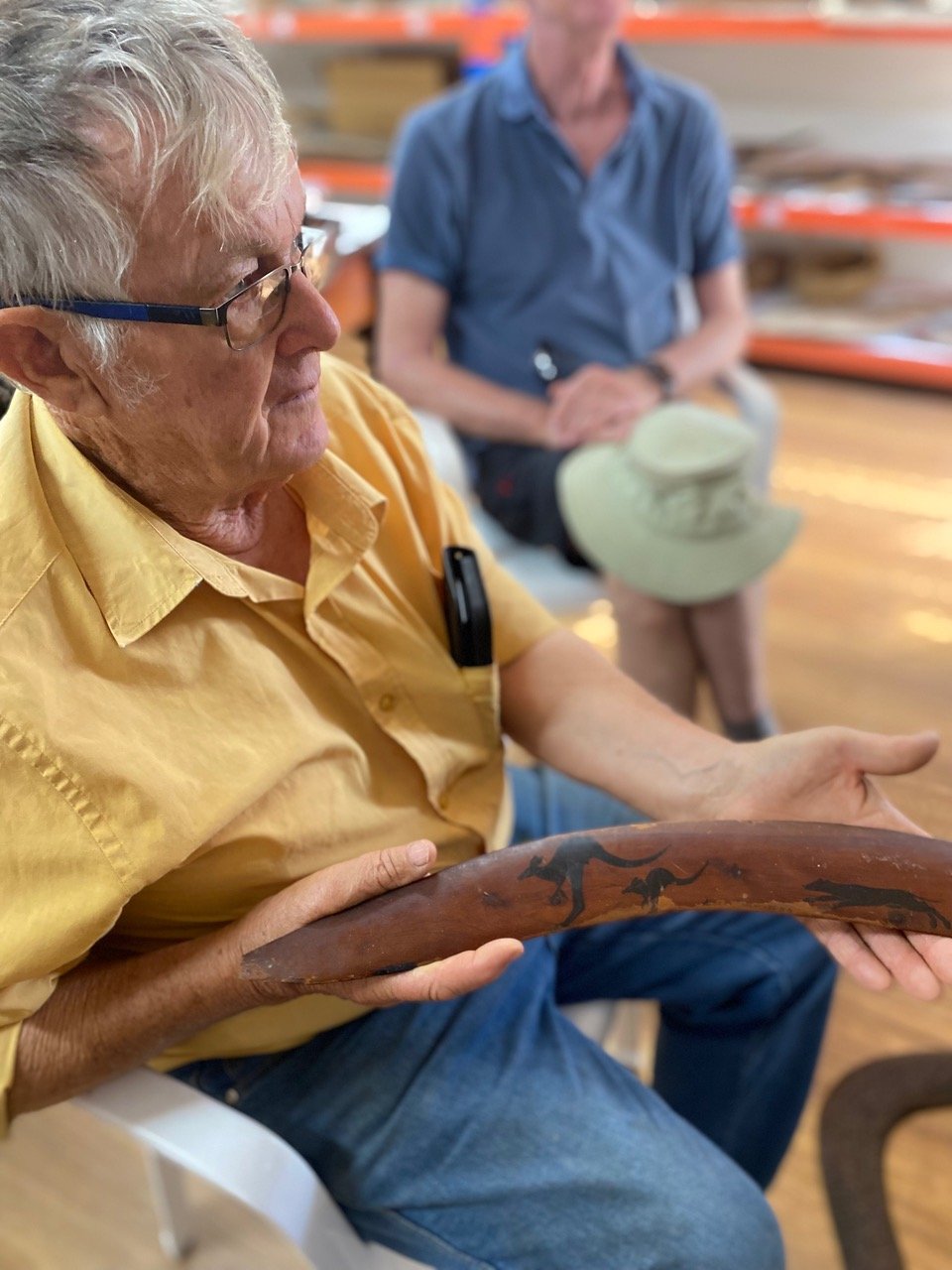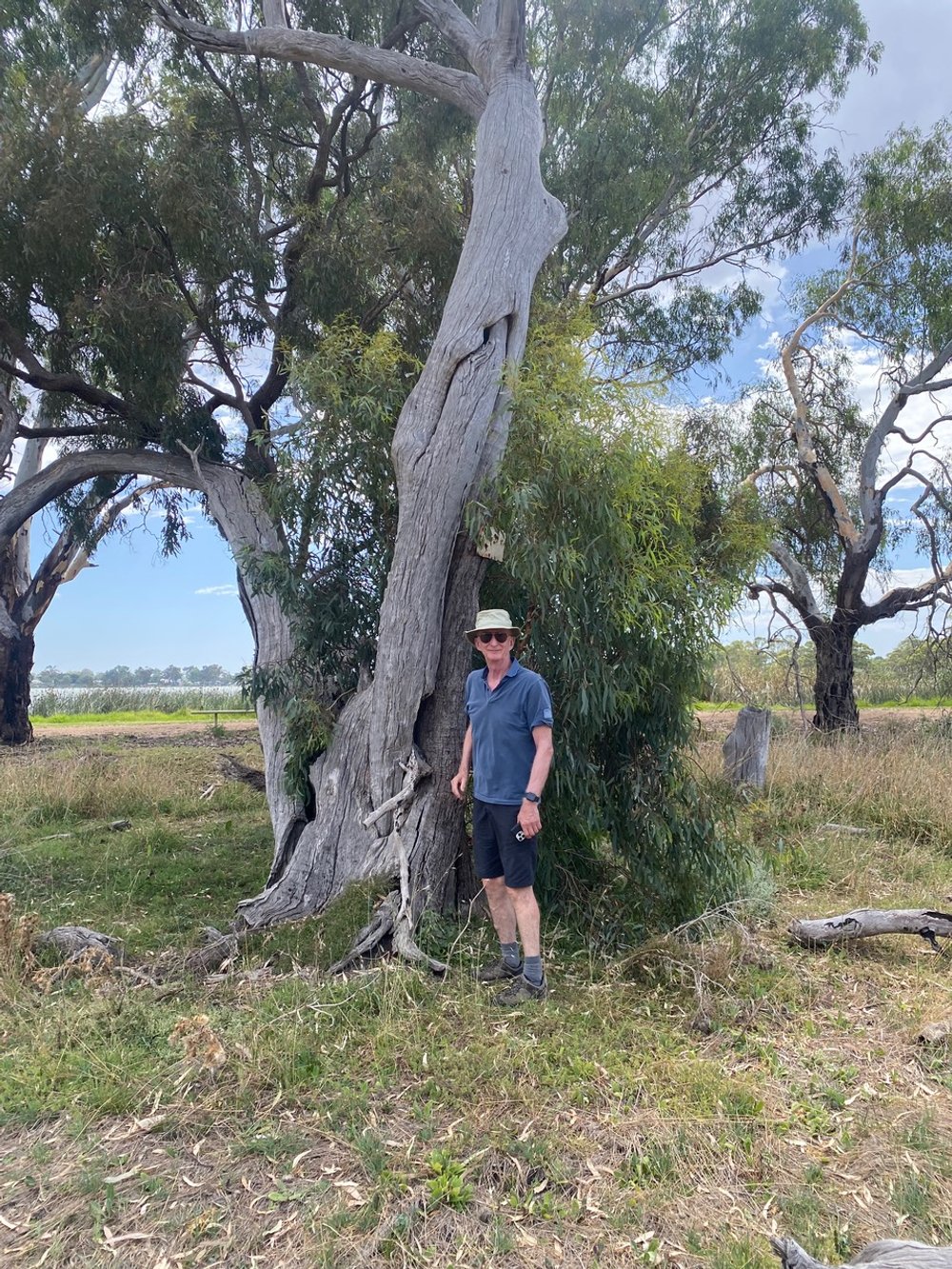Visit to Boort & Scar Trees - March 2024




I have always been fascinated by scar trees but was never sure why. Maybe it’s their connection to deep time and their visual and tangible link to past Aboriginal cultural practices. After watching the documentary, The Lake of Scars , I was even more keen to see them and, on a recent road trip, that wish was fulfilled.
My husband and I met Paul Haw, a retired farmer and Vietnam Vet, at his Yung Balug Aboriginal Artefacts Museum or ‘keeping place’ in Boort, Victoria. Boort is an Aboriginal word meaning ‘smoke from the hill’- the local Bald hill is where the local population sent smoke signals.
The museum is impressive and, as the film shows, Paul is regarded as an honorary custodian of these local Aboriginal artefacts, either found on his property or donated by other locals. Paul has an infectious passion and commitment to educate as many people as possible about local Aboriginal culture. His book, Footprints across the Loddon Plains (co-authored), documents the rich history of the Aboriginal people and the early settlers of the Loddon Plains area, home of the Yung Balug Clan. He has even begun building a second building to house more local artefacts. In his late seventies, that’s impressive too.
Many clans including the local Dja Dja Warrung clan lived on these rich and fertile wetlands, resulting in numerous examples of their past lives which Paul has preserved. We saw a huge array of heat beads (used for cooking), gypsum, grinding and hammer stones, axe heads and boomerangs (including one owned by artist Albert Namatjira) plus many black and white photographs taken in the 1850s taken by local grazier John Hunter Kerr.
Disappointingly, Kerr also donated three bark etchings to the British Museum/Kew Gardens and despite countless efforts, the Dja Dja Warrung people have not been able to repossess them. (As an aside, I have applied to view them on a visit to London in May. Watch this space!)
Boort is home to the largest collection of scar trees in the world. Amazingly they have survived land clearance and natural decay. We saw black box trees where the bark had been carefully and deliberately removed by quartz tools. The trees are left with a distinct indentation (often oval), its size and shape dependent on the bark’s use which included canoes, shields, carrying vessels, huts and frames.
The canoe tree scars were extraordinary – massively tall; up to 5-6 metres in length. They are rare to see and Boort has only about 10 left. It seems it’s hard to determine their age, but most authentic Aboriginal scarred trees are probably over 100 years old. Some trees had more than one scar; Paul pointed out one with four scars. As Paul ‘read’ the land and pointed out numerous old cooking mounds, it was obvious that this area had been highly populated.
Sitting amongst these trees was memorable - taking time to reflect on the Dja Dja Warrung people, their land and activities as well as experiencing this Country through its sounds, wide-open skies and its silence. The latter led me to ponder deeply on my own ancestors.
It was a privilege to both meet Paul and to see these sacred trees in this rich cultural landscape. I highly recommended a visit.
Excellent Blog on Scar trees by Jane Pye www.scartrees.com.au